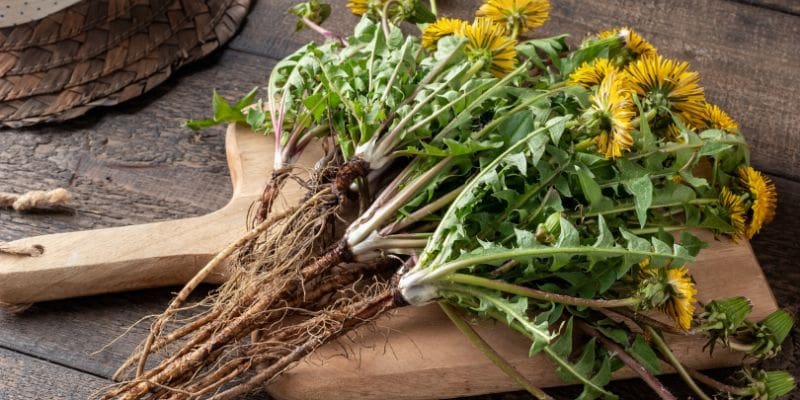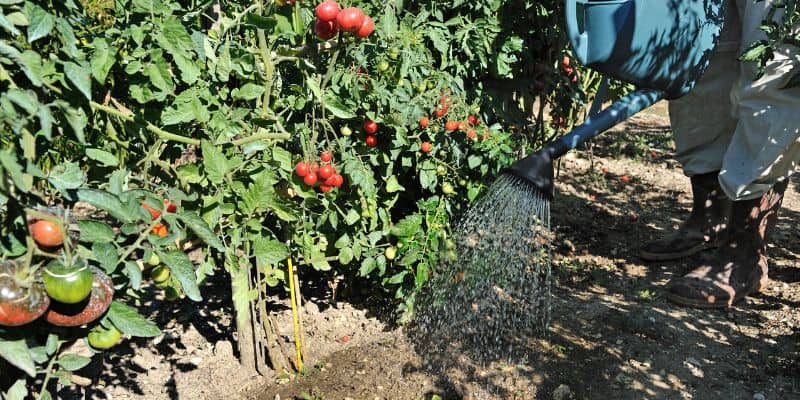Sometimes feared as an unwanted plant or loved for culinary recipes, dandelion is also a very useful plant in the garden, especially in the vegetable garden and orchard, when transformed into dandelion manure. This dandelion maceration produces a natural fertiliser, usable in organic vegetable gardening or in permaculture. Find out in our tutorial how to make dandelion manure, its benefits and how to use it.

What are the benefits of dandelion manure?
When fermenting, dandelion manure is reputed to be rich in various nutrients, particularly in potassium (the famous element "K" from "NPK"), but also in cilice and phosphorus, which are essential to plant growth. Potash stimulates development of young plants, especially in the vegetable garden, thereby encouraging flowering and consequently fruiting. Plants are also more resistant to disease and pest attacks. Dandelion manure is particularly used in tomato cultivation, but also in the orchard. It is very useful to use it alongside nettle and horsetail manure.
Dandelion manure is also used by spraying on the foliage of certain plants to prevent onset of fungal diseases, such as late blight or powdery mildew.
Steps to make dandelion manure
1- Collect dandelions whole, including leaves, flowers and roots. You will need 1 kilogram of dandelions to obtain 5 litres of manure.
2- Quickly brush the roots to remove as much soil as possible.

3- If possible, we recommend cutting or chopping the dandelions to speed up maceration and release of nutrients.
4- Place the dandelions in a large sealable container, such as a food-grade bucket or a manure preparer (e.g. "Biomix").
5- Then pour 5 litres of rainwater and close the jar with its lid.
6- Let the dandelions macerate in this container for 10 to 20 days depending on outside temperature, taking care to stir the contents every 2 to 3 days.
7- Your dandelion maceration is ready when the liquid takes on a nice brown colour and no more bubbles or foam form on the surface.
8- Once your manure is ready, strain it to keep only the juice. You can then store it in a bottle or container, in a place protected from light and heat. It will keep for 2 to 3 years unopened, then 2 to 3 months once opened.
How to use my dandelion manure?
- In a 5-litre watering can, pour 1/2 litre (500 ml) of nettle manure and top up with 4.5 litres of rainwater (approximately a 10% dilution).
- Then water your young plants before and during flowering with this dilution to encourage flower production. Dandelion manure is particularly effective on young tomato plants, but also on recently transplanted vegetable plants and ornamental flowers.
- You can also spray this dilution of dandelion manure (always 500 ml of nettle manure to 4.5 litres of rainwater) on the foliage of fruit bushes and vegetable plants to prevent onset of fungal diseases.
- Feel free to combine dandelion and nettle macerations, so you can benefit from advantages of both preparations: encourage growth, strengthen plant defences, reduce risk of disease and repel harmful insects.
































![[plant]Leaves[/plant] and [plant]flowers[/plant] of [plant]dandelion[/plant] are used to make a [plant]dandelion[/plant] [plant]manure[/plant]. Dandelion Pesto Recipe](https://en.promessedefleurs.eu/blogwp/wp-content/uploads/2023/01/Comment-faire-du-purin-de-pissenlit-.png)
Comments